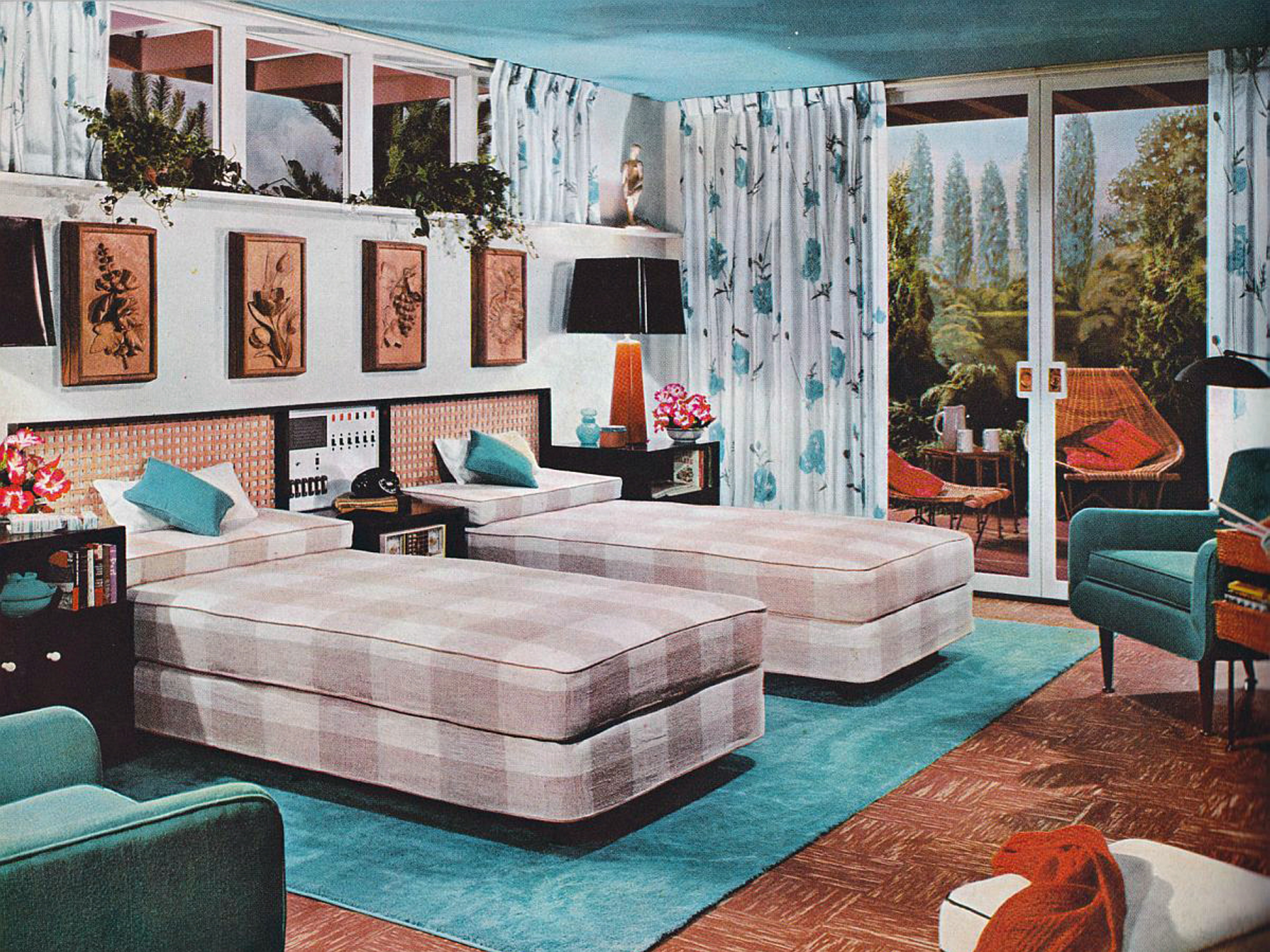- Bedroom decor and designs have changed dramatically over the last 100 years.
- In the early 1900s, bedrooms were designed with a sink or washbasin inside so people could wash and bathe. Eventually, the bathroom became its own room.
- Today, bedrooms are filled with modern technological amenities, which started in the 1980s.
- Visit INSIDER.com for more stories.
Today, the bedroom is considered a place for sleeping, for children’s playtime, for teenage sanctuary, etc.
It hasn’t always been this way, however. Going back to ancient times, beds were made of plants and raised off the ground to avoid the bugs and other pests that roamed the floor at night. Since then, the bedroom has changed dramatically from simple bed chambers to lavish hideaways.
Here’s how the bedroom has evolved from the early 1900s to today.
In the early 1900s, immigrants across the US lived in tenements where their entire apartment was just a cramped bedroom.

City life was especially challenging for the poor, forcing entire families to live in single room tenements. By 1900, there were 80,000 tenements in New York with 2.3 million people living inside them.
But not everyone in America lived this way. Some were fortunate enough to have full-sized homes with individual bedrooms, often furnished with a four-poster bed.
For those who were wealthier, bedrooms often came equipped with sinks or an area to wash up in.

In the early 1900s, bedrooms were used for two functions: to sleep and to wash or groom.
Soon, privacy became an important need in bedrooms, especially in the US.

As plumbing became more advanced, bathrooms became their own individual rooms, giving people more privacy.
In the 1920s, the economic boom inspired people to create luxurious bedrooms.

For the first time in the US, people started decorating their bedrooms to be more lavish and attractive.
The mid 20th century introduced the mid-century modern design movement, which can be seen in this bedroom.

The mid-century modern movement prioritized clean lines and minimal features.
In the '40s and '50s, some couples opted to sleep in separate twin beds next to each other.

"There was a sense - and I actually remember this from my taking an oral history of my own grandmother - that there was something mildly disreputable about essentially advertising, even to your kids, that you might be having sex together," Stephanie Coontz, a professor of family history at Evergreen State College, told Salon.
At the same time, a baby boom was occurring in the US, so children's rooms were becoming more and more popular.

Historians argue that the baby boom was a result of America's desire to return to normal after years of war. Others say it was in response to the Cold War.
At the time, bedrooms took on a second function as a playroom.

By 1964, 76.4 million babies were born.
As the sexual revolution rocked the '60s and '70s, the interior design shifted again to emphasize wood features.

In this photo, you can see the wood paneling on the way, which was a popular feature during the '70s, as people favored dark cherry wood.
The wood craze of the '70s continued even into adult bedrooms, with muted and neutral colors.

Shag carpets were also popular during this time period and are still used today.
The muted colors could even be seen in children's bedrooms throughout the '70s.

The bold patterns are also a sign of the times in this room.
During this time period, the invention of the duvet cover made its way to the US.

The duvet cover was created in Scandinavia, and home goods retailer Terence Conran brought it over to England. The duvet cover quickly caught on, eventually spreading to the US in the '60s and '70s. The duvet cover revolutionized the bedroom because people could suddenly make a bed by just shaking the blanket a couple of times.
Another popular invention at the time was the waterbed.

The waterbed was invented in 1968 by Charles Prior Hall and went into production in the '70s. By 1987, waterbed sales made up 22% of all bed sales in the US.
Throughout the '80s, the decor became more muted and rooms started to fill with technology.

In the picture above, the girl has a record player and stereo system in her bedroom, foreshadowing the technological bedrooms we have today.
In the '90s, technology continued to be featured in the bedroom, like this stereo system.

Pine was also a popular design trend in the '90s, which is displayed prominently here.
Floral designs, window drapery, and pinkish colors were also popular design trends in the '90s, and the bedroom was no different.

The bold colors, like pink and blues, are also a sign of the decade.
Bunk beds have become popular features in children's rooms, including in the '80s and '90s.

Throughout the years, they've always been a great way to create space in smaller rooms.
Bedrooms in the early 2000s muted the colors again, as the sleigh-shaped bed became more popular.

White, chocolate, and bronze colors were the most common choices for bedrooms in the early 2000s.
As for teenagers, the bedroom continued to be a place to express themselves, like with posters on the walls in the early 2000s.

The computer became a popular feature in bedrooms as well.
Bedrooms today are sleeker and filled with modern amenities.

Today, bedrooms are equipped with flat-screen televisions, light dimmers, memory foam mattresses, and expensive bedding.
